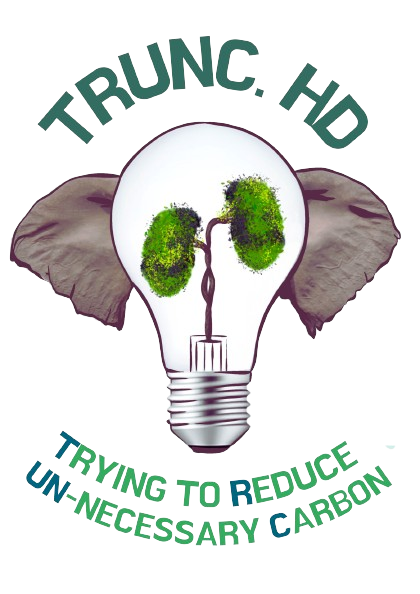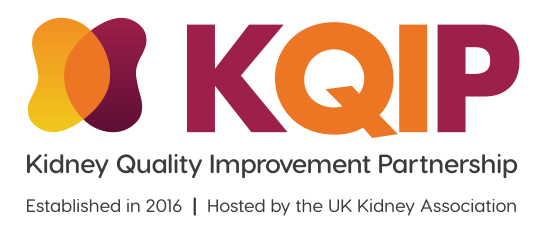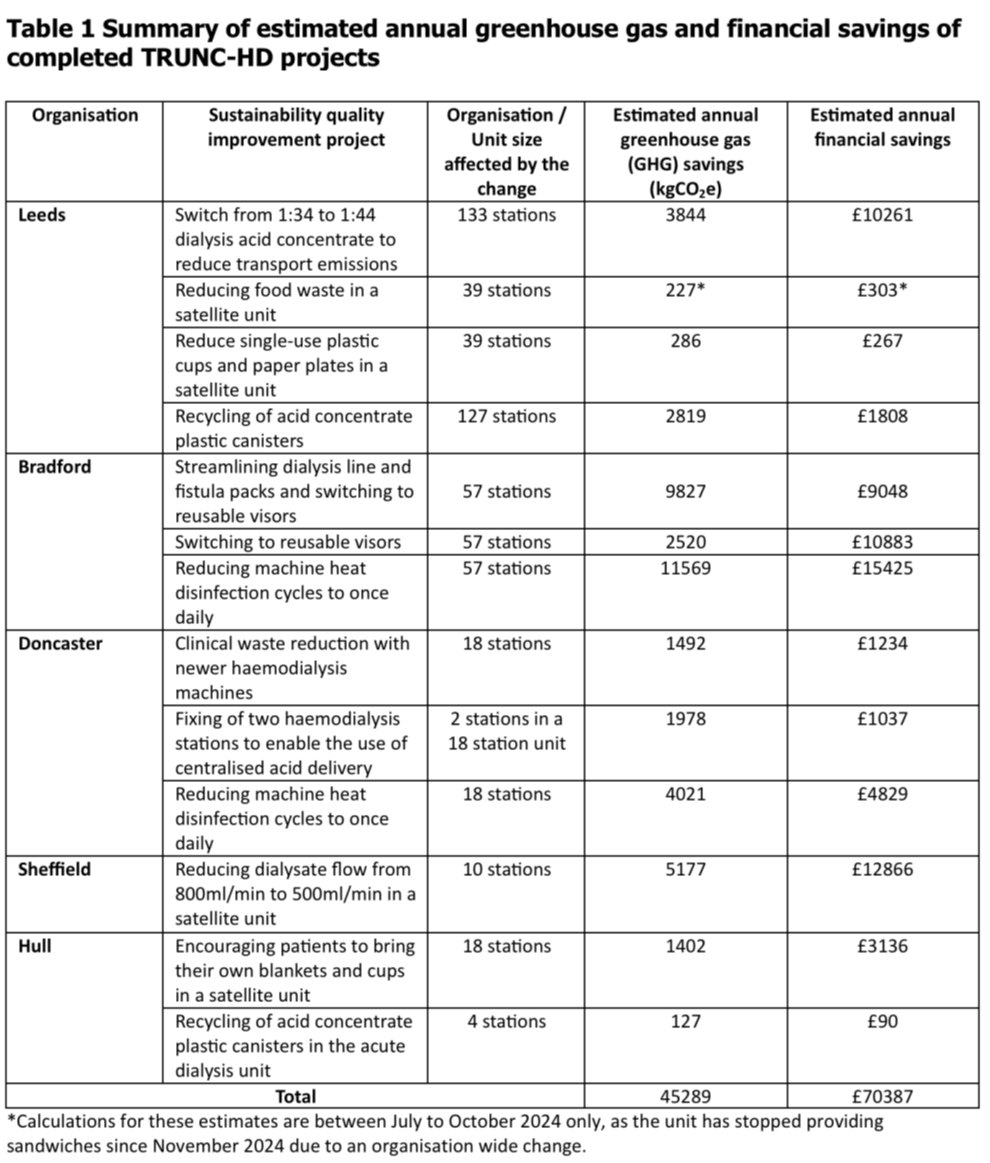TRUNC. HD - Trying to Reduce UN-necessary Carbon



Welcome to the Trunc. HD knowledge hub, an interactive knowledge and resource platform to support health care professionals with sustainability QI projects. This is a platform for you to share your challenges, to learn best practices, and to contribute to quality improvement with a network of renal professionals.
It is a place to connect with, learn from, and support each other.
TRUNC. HD

Empowering patients to be involved in sustainability
Encouraging dialysis patients to bring their own blankets and cups to reduce waste, electricity and water use.
Moving from 1:33 to 1:44 central acid concentrate
Using a more
concentrated acid mix to reduce plastic waste and transport emissions.
Recycling acid cannisters
Diverting plastic acid cannisters from waste for incineration through
systematic recycling efforts.
Reducing consumable waste
Reducing dialysate flow rate form 800mls/hr to 500mls/hr
Reducing dialysate flow rate from 800ml/min to 500ml/min to conserve
water and acid concentrate without compromising treatment efficacy
Reducing food waste
Preventing excess food disposal by improving ordering practices
Reducing number of dialysis machine heat discinfections
Reducing energy, water and citric acid use by optimising the frequency
of machine heat disinfection cycles
Using the ICHD carbon calculator
Using the Newcastle ICHD carbon calculator to identify emission reduction opportunities in the care pathway.
Resources
TruncHD
Find additional resources from Yorkshire & Humber TRUNC.HD projects and events here!
Write your awesome label here.
Share your feedback
We would greatly appreciate your feedback on the DAYLife hub.
Your insights will help us to develop a high quality, useful and intuitive hub to support home dialysis quality improvement projects throughout the UK.
Your insights will help us to develop a high quality, useful and intuitive hub to support home dialysis quality improvement projects throughout the UK.
Workstreams

Shared Haemodialysis Care
This working group provides resources to support the 'shared care' approach in haemodialysis, where patients gradually develop skills alongside health professionals, allowing for for self-paced decision-making.

Psychosocial Support
Distress is a natural response to kidney failure and related treatment choices. This workstream provides resources for embedding proactive holistic support systems that address the emotional and social dimensions of home dialysis.

Shared Decision Making
Access this workstream for guidance on fostering a participatory environment where patients' values and preferences are central to selecting appropriate CKD treatments.

Peer Support
Peer support from other patients and carers is crucial in informing, choosing, and maintaining home dialysis. Access this workstream for resources to develop peer-to-peer networks that enhance patient confidence and treatment engagement in home dialysis.
What's new?
Check out the most recent resources that we've added to the knowledge hub.
DAYLife Programme Resources
Reports, webinars, slides, links to patient resources, FAQs and more.
Four Workstreams
Targeted resources related to shared haemodialysis care, psychosocial support, shared decision making, and peer support.
Community
A place to share experiences, ask questions, and network with healthcare professionals interested in driving quality improvement in home dialysis.
Under development...
More resources are in the works!
Home dialysis QI reporting
Are you involved in a QI project on home dialysis? We've created a reporting system for home dialysis QI projects. Please share your project details to inform others and strengthen the knowledge network.
QI report repository
We are currently compiling and sharing a database of home therapies QI projects in the UK. Use the repository to connect with others working on similar projects and gain insights that will help with your own projects.
The TRUNC. HD Team
KQIP
KQIP is a dynamic network of kidney health professionals, patients and carers who are committed to developing, supporting and sharing improvement in kidney services, to enhance outcomes and quality of life for people with kidney disease.
Yorkshire & Humber Network
Blurb

